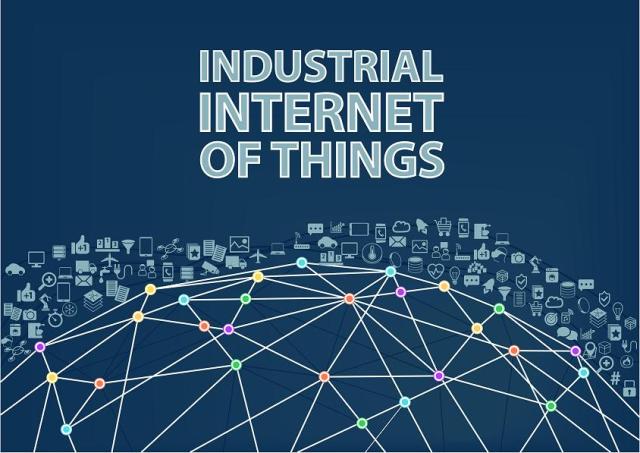Oct 9 2015
The promise of connecting everything within an industrial environment, to get complete operational visibility and allow for the best real-time decisions, will transform how we manufacture for years to come. The premise for this next industrial evolution is the Industrial Internet of Things (IIoT), says Tony Paine, CEO of Kepware Technologies.
 Industrial Internet of Things
Industrial Internet of Things
As industry looks to build out the Industrial Internet of Things (IIoT), its biggest challenge will be seamlessly Internet-enabling the ‘Things’ that live at the edge of the network. Industry-wide, this area contains trillions of Things that contain one or many data points that may need to be analysed and combined into information.
IIoT sets its sights on Internet-enabling all hardware and software components (the “Things”) that comprise an automation system. This will allow for smarter automation, where Things can share information with other Things and adapt their behaviour, to achieve optimum performance. In addition, personnel responsible for the operations of the system will be able to remotely assess and manipulate all aspects of such systems, without the need for dedicated on-site expertise.
These benefits are contingent upon the resolution of key challenges; most notably the interchange of data between the mechanical, digital and human components of an industrial automation process.
Today, however, there are several cultural and technological changes that are impacting the scale and speed of the creation of the IIoT.
New ‘big data’ software vendors are entering the market, looking to provide products to consolidate data, unify legacy solutions, and bridge the gap between external and internal operations.
In tandem with such software products, hardware technology is becoming lower-cost, allowing for unlocking of previously unavailable data from low-level sensors.
Furthermore, our society’s reliance upon Internet technologies permeates all aspects of life, with the next generation of industrial engineers growing up with the assumption that industrial data will be available, rich, easy to use, and everywhere.
And finally, multi-site data connectivity will assist with strategies at the enterprise level, with competitive advantages to be gained by moving beyond traditional organisational boundaries, to use and involve third parties.
As already mentioned, the biggest challenge to building the IIoT will be seamlessly integrating the Things that live at the edge of the network. The edge of the network is the furthest removed from the Information Technology (IT) we have become accustomed to using when Internet connectivity is required.
Challenge 1: Identifying Things within the Internet
In order for Things to be able to communicate with each other, they need to be uniquely identifiable within the Internet. Historically, this has been accomplished through a unique Internet Protocol (IP) address. As industry looks ahead to the trillions of Things that will be connected, focus has been placed on adopting the Ipv6 standard, which defines a 128-bit address capable of uniquely identifying 340 undecillionth (340 x 1036) addressable items (compared with only 4 billion addressable items using today’s Ipv4 standard).
This range will more than cover the requirements of IIoT. However, it will be difficult – if not impossible – to manage this effectively on a global Internet scale. Typically, such tasks have historically been achieved by Naming and Number Authorities, with the aid of Network Administrators, but this will likely be an impediment, as Things become added at an unprecedented rate.
Challenge 2: Discovering Things and the data they possess
Once a Thing can be identified, the next challenge is how other interested parties will discover that it exists and what data it possesses. Of course, a Thing should be able to restrict discovery of some or all of its data, based on security requirements. Balancing ease of discovery with the rigid constraints of security will be fundamental to the success of IIoT and must be achievable without a PhD in cyber security.
Challenge 3: Managing massive amounts of data
These trillions of Things will produce something much larger than trillions of data points, all of which will need to be collected, analysed and possibly archived. Moving this amount of data over the Internet will consume new levels of bandwidth, which could result in the degradation of service as well as higher costs for Internet carriers, service providers, and ultimately end users. Moreover, archiving this data for future analysis will require massive amounts of data storage and a new generation of scalable analytical applications capable of honing in on individual points of interest, in a timely manner.
Challenge 4: Navigating connectivity outages
The Things that make up IIoT, as well as the communication mediums that link them together, will not be available 100 per cent of the time, resulting in intermittent or even long term outages. This could severely impact systems where data loss is unacceptable or where variances in the data needs to be known in real-time.
Challenge 5: Integrating existing infrastructure into new IIoT strategies
For decades, Industrial Things have made data accessible over private, site networks, through the implementation of open or proprietary protocols. And in the past, complexities such as security have largely been ignored, in order to achieve optimisation and integration between dissimilar industrial systems, within a private environment. Given that the typical lifecycle for industrial Things exceeds 20 years, there will be an expectation to integrate the existing into new IIoT strategies. Opening these private networks and the data they contain to the Internet will require detailed security assessments to minimise risk of exploitation.
Dave Hammond is Product Manager at M.A.C. Solutions, who is the preferred partner for Kepware in the UK and an Authorized Reseller in France. For more information or to download the full white paper “Industrial Internet of Things and Communications at the Edge” by Tony Paine, CEO of Kepware Technologies, please visit www.mac-solutions.net or www.kepware.com or telephone MAC Solutions on 01527 529774 or email [email protected]